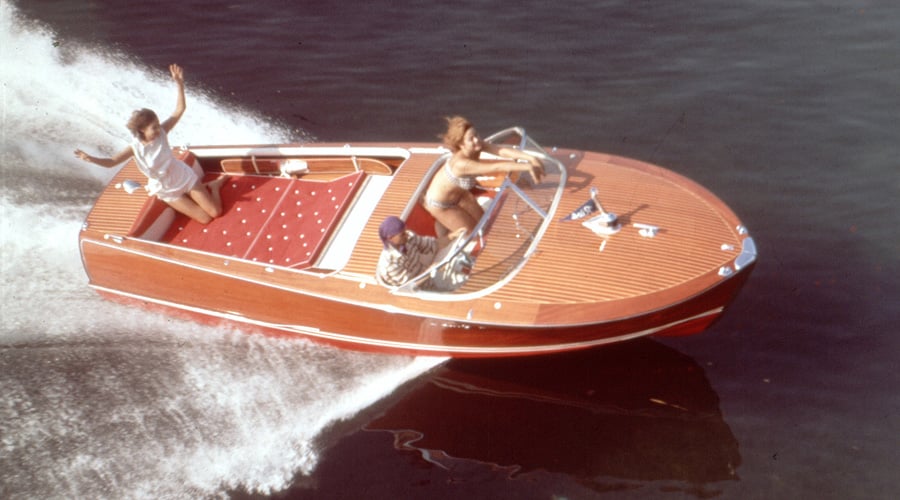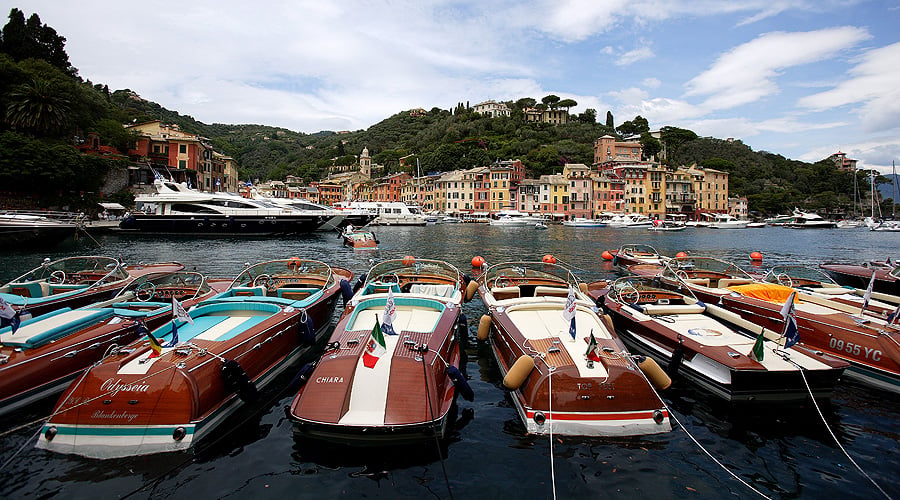Those were the words of legendary '60s playboy and actor Gigi Rizzi, for whom a Riva was as much a gentleman's essential as a beautiful blonde, a convertible Ferrari, wristwatches by Piaget and Patek Philippe, a clifftop home with a garden down to the sea and a richly stocked walk-in wardrobe. But Riva's origins could scarcely have been more different. It all started in 1842 with an impecunious Pietro Riva, sitting on the banks of Lake Como, patching up his little wooden fishing boat which had been holed below the waterline after being stacked with an ambitiously heavy load of bricks.
Taking a lump of wood, trimming it, shaping it and curving it was second nature to him, but a visiting fisherman from Lake Iseo was mesmerised by what he saw - this was no ordinary boat repairer: this was a genius at work. "If you come to Sarnico I can find you more jobs," said the stranger, referring to a couple of boats which had been smashed against rocks by the River Oglio bursting its banks a few days before.



Pietro made the 70-mile rail trip between the two lakes and set to work, only for word of his abilities to quickly spread around the local community which depended on boats for its livelihood. Soon, Pietro was commissioned to build two vessels from scratch - and the foundations of the greatest name in the history of pleasure craft were laid.
The Riva yard quickly built up business, but it was not until Pietro's son, Ernesto, died in a boat-building accident in 1907 that the scene was set for the phenomenal future which lay ahead. Ernesto's untimely demise left the company in the hands of his brother, Serafino, who decided to abandon Riva's core business of transport boats and concentrate on high-quality leisure craft powered by small, European inboard engines and American-built outboards. This new-fangled motive power gave the wealthy, devil-may-care young men and women of the age a brand new means of getting their kicks - motor boat racing. As early as 1912, a Riva speedboat was skimming across Lake Iseo at close to 20mph and, after the Great War, Serafino set about competing in as many races as possible to promote the superior performance of Riva products. Fortunately for him, Mussolini's fascist regime was all in favour of such activities (it was good propaganda for people to be seen having fun) and Serafino became a national hero.



By now, Riva was already a high-profile name and the success of its products enabled Serafino to start constructing the type of boats during the mid-1930s which most of us now recognise as 'true' Rivas - that is, those deeply varnished, mahogany-decked runabouts which are the epitome of marine sophistication. World War Two got in the way a bit (although production was never halted) but, by the late 1940s, the firm was flying high again, partly thanks to the discovery in 1948 of water-skiing, a pastime for which a Riva boat was to become de rigueur.
Such was the popularity of the sport that the Grand Hotel Miramare at Santa Margherita even commissioned Riva to build a boat specifically for pulling the bright young things who thought there was nothing more amusing than being hauled across the glassy surface of a lake on a couple of planks of wood. The result was the eight-cylinder Riva Super Florida, which became the most successful Riva model of all, with more than 1,000 examples built between 1952 and 1969.



Throughout the '50s and '60s, no self-respecting playboy, film star, sporting champion, tycoon or adventurous royal could possibly contemplate taking to the water in anything other than a Riva - at 8 metres, the Aquarama was the ultimate in floating status symbols, followed by the 6-metre Ariston. The Super Florida, available in 5.4- or 6-metre lengths, seemed to strike the perfect balance between speed, looks, thrills and sunbathing space, while lower-key Riva owners (which were distinctly rare creatures) might have gone for a little 5.2-metre Corsaro or the even smaller, 4.2-metre Scoiattolo or Junior models. The list of Riva owners from the period is so star-studded as to be almost predictable: Prince Rainier, of course; Sean Connery, yes; Brigitte Bardot, naturellement; the Shah of Iran - he had everything - and Richard Burton?
Photos: Riva












